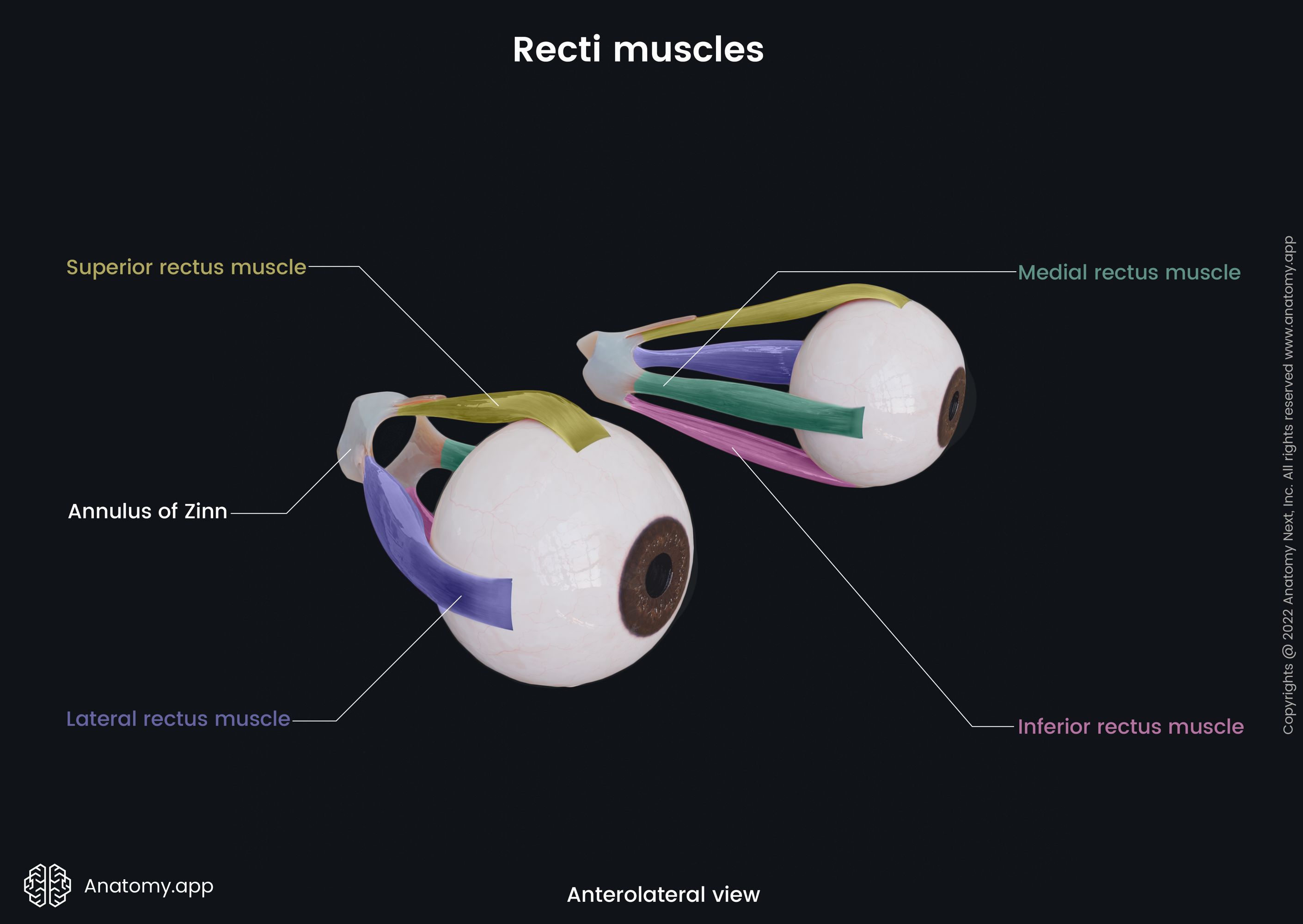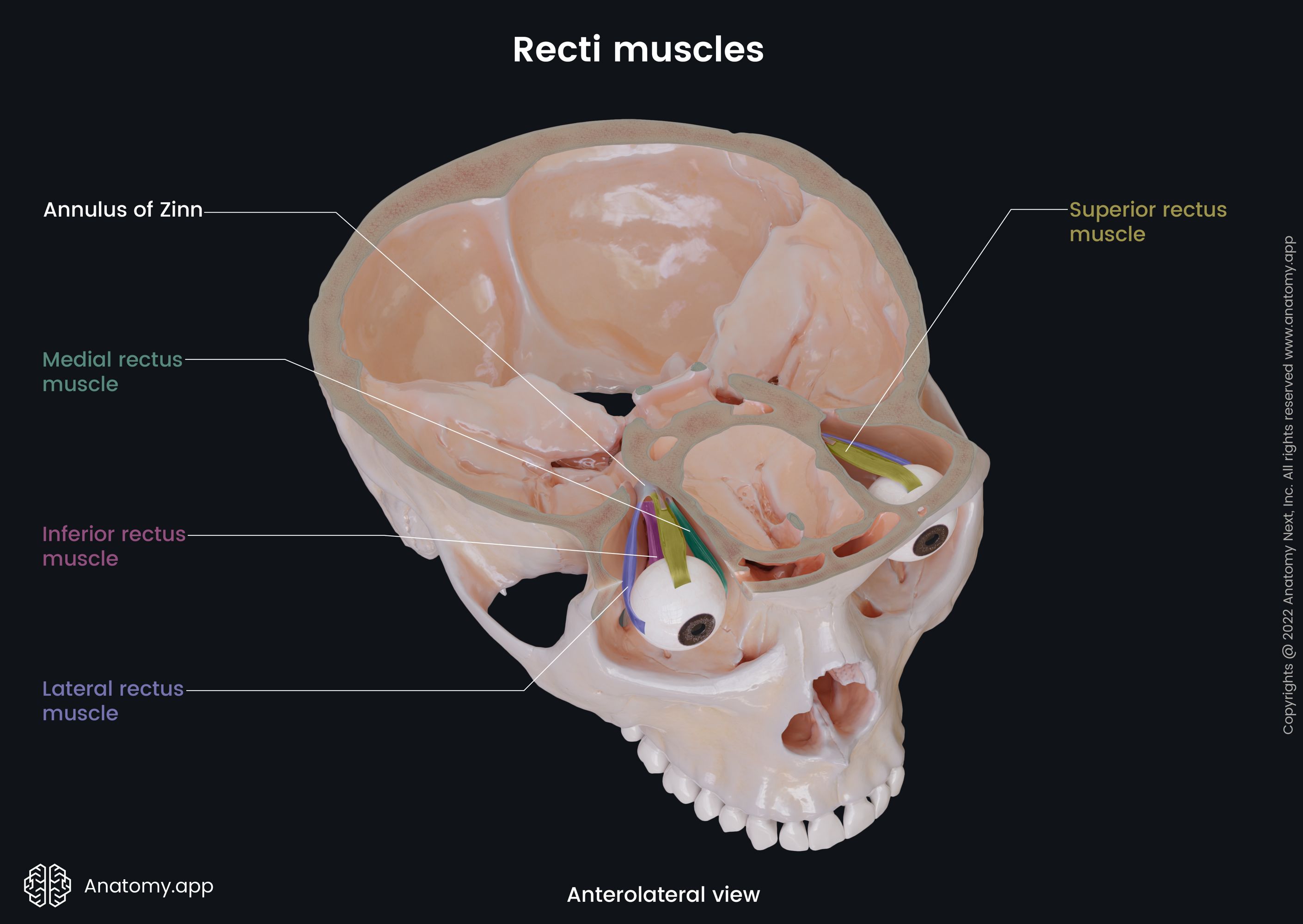- Anatomical terminology
- Skeletal system
- Joints
- Muscles
- Head muscles
- Neck muscles
- Muscles of upper limb
- Thoracic muscles
- Muscles of back
- Muscles of lower limb
- Heart
- Blood vessels
- Lymphatic system
- Nervous system
- Respiratory system
- Digestive system
- Urinary system
- Female reproductive system
- Male reproductive system
- Endocrine glands
-
Eye
- Accessory structures of eye
- Ear
Lateral rectus
The lateral rectus (Latin: musculus rectus lateralis), also called the lateral rectus extraocular muscle, is one of the six extraocular muscles that control eye movements. Activation of the lateral rectus moves the visual gaze laterally.
Origin
The lateral rectus originates from the lateral part of the common tendinous ring and bridges of the superior orbital fissure. Some fibers of the lateral rectus also arise from the spine on the greater wing of the sphenoid bone.

Insertion
The insertion site of the lateral rectus is the lateral surface of the sclera, approximately 0.3 inches (7 mm) behind the corneal limbus.

Action
The main function of the lateral rectus is to turn the eyeball laterally.

Innervation
The lateral rectus is innervated by the abducens nerve (CN VI).
Blood supply
The arterial blood supply of the lateral rectus muscle comes from the ophthalmic artery.